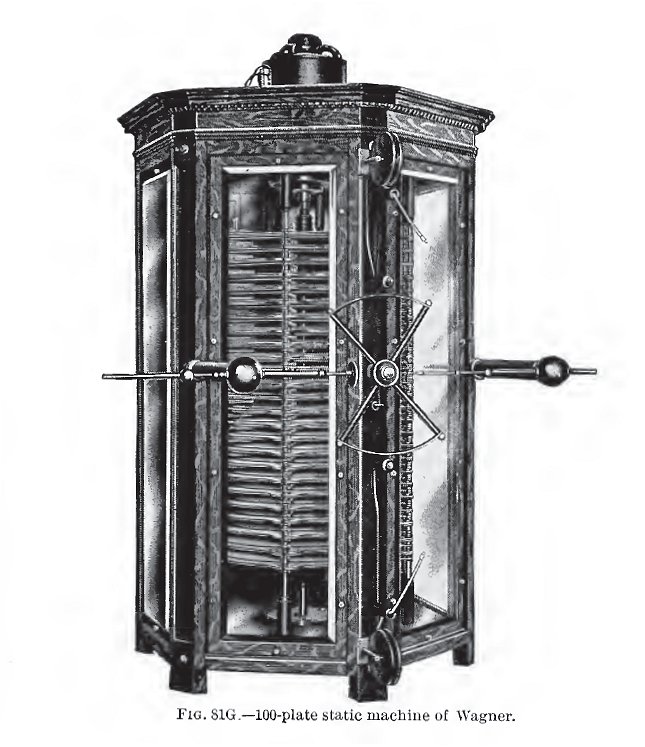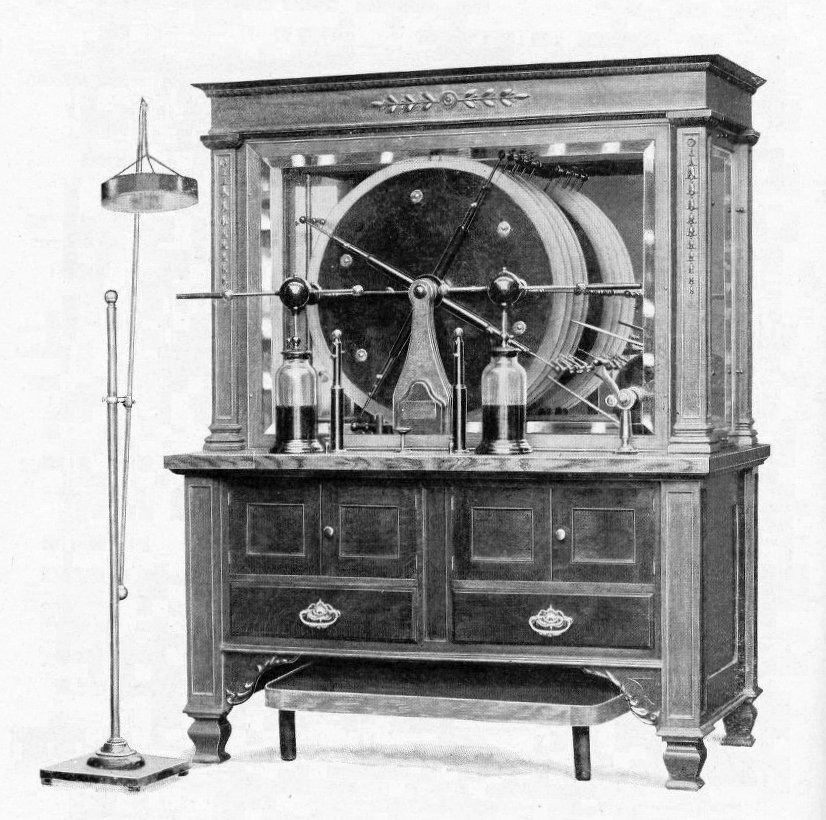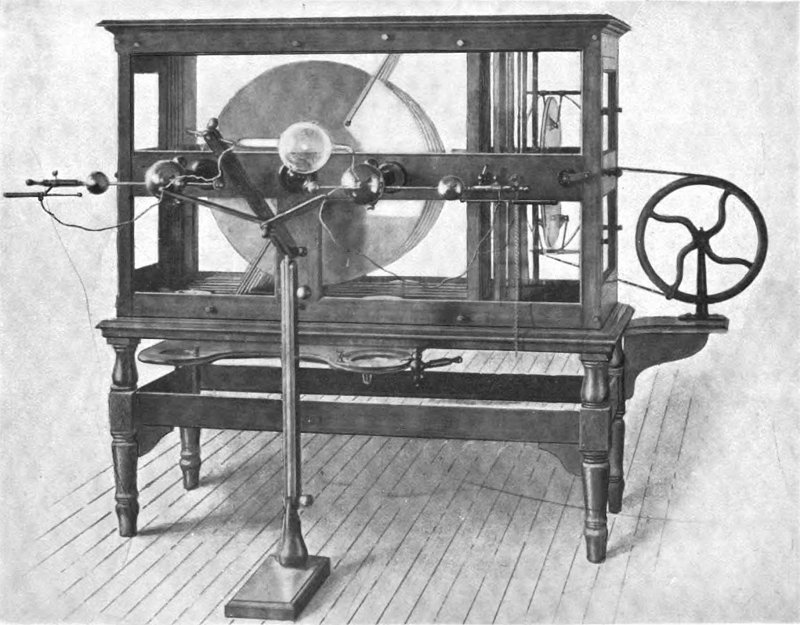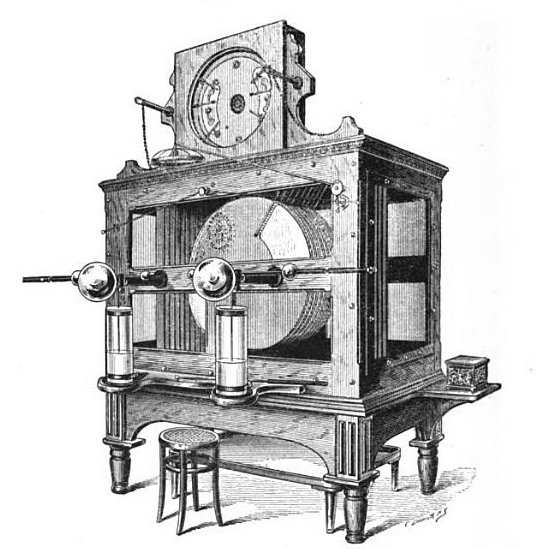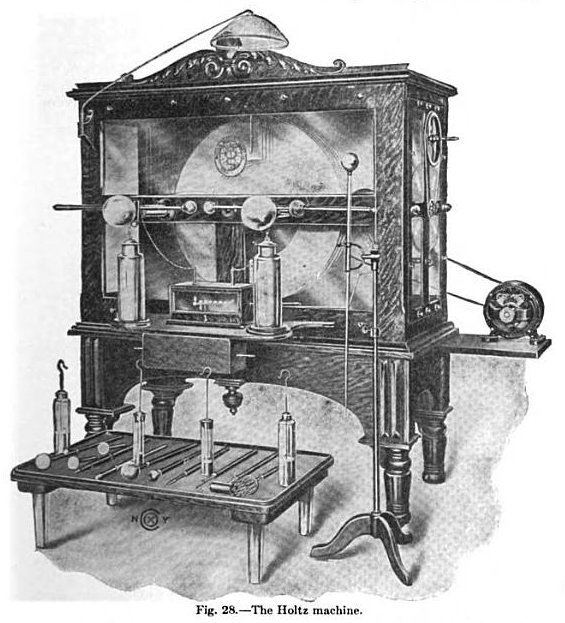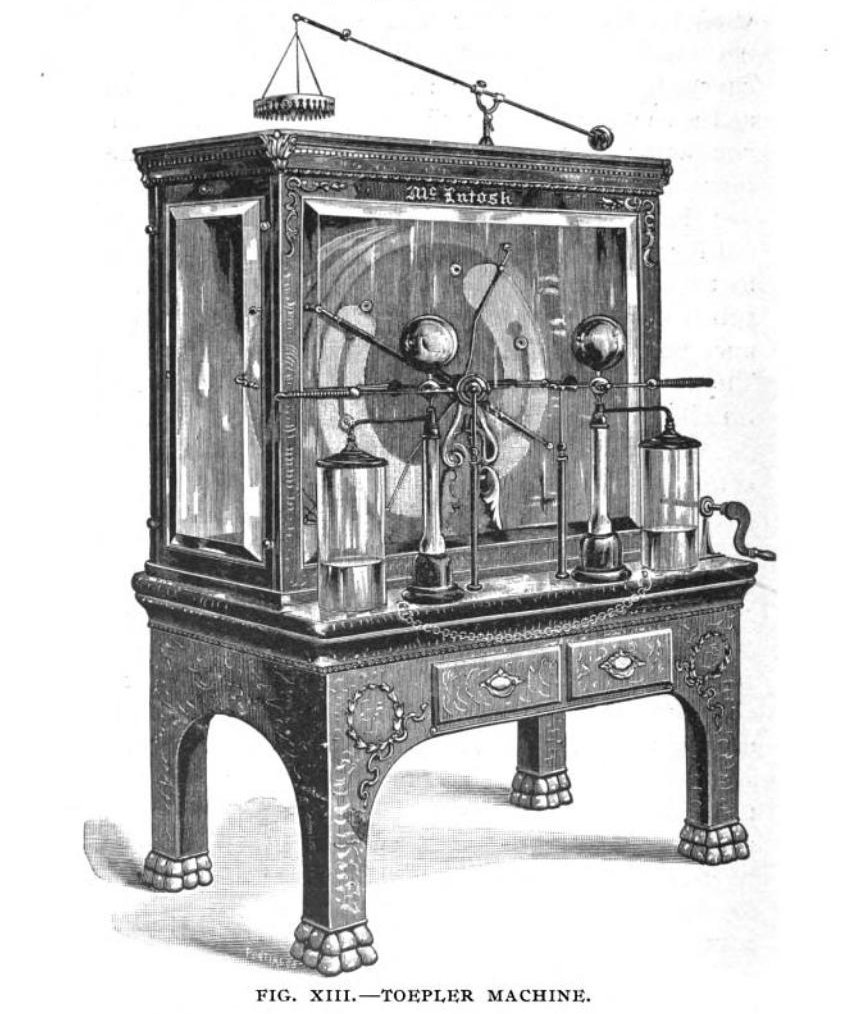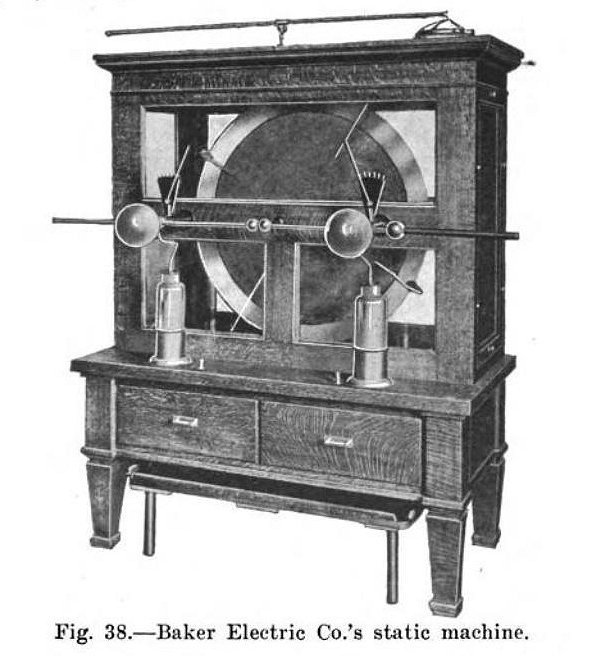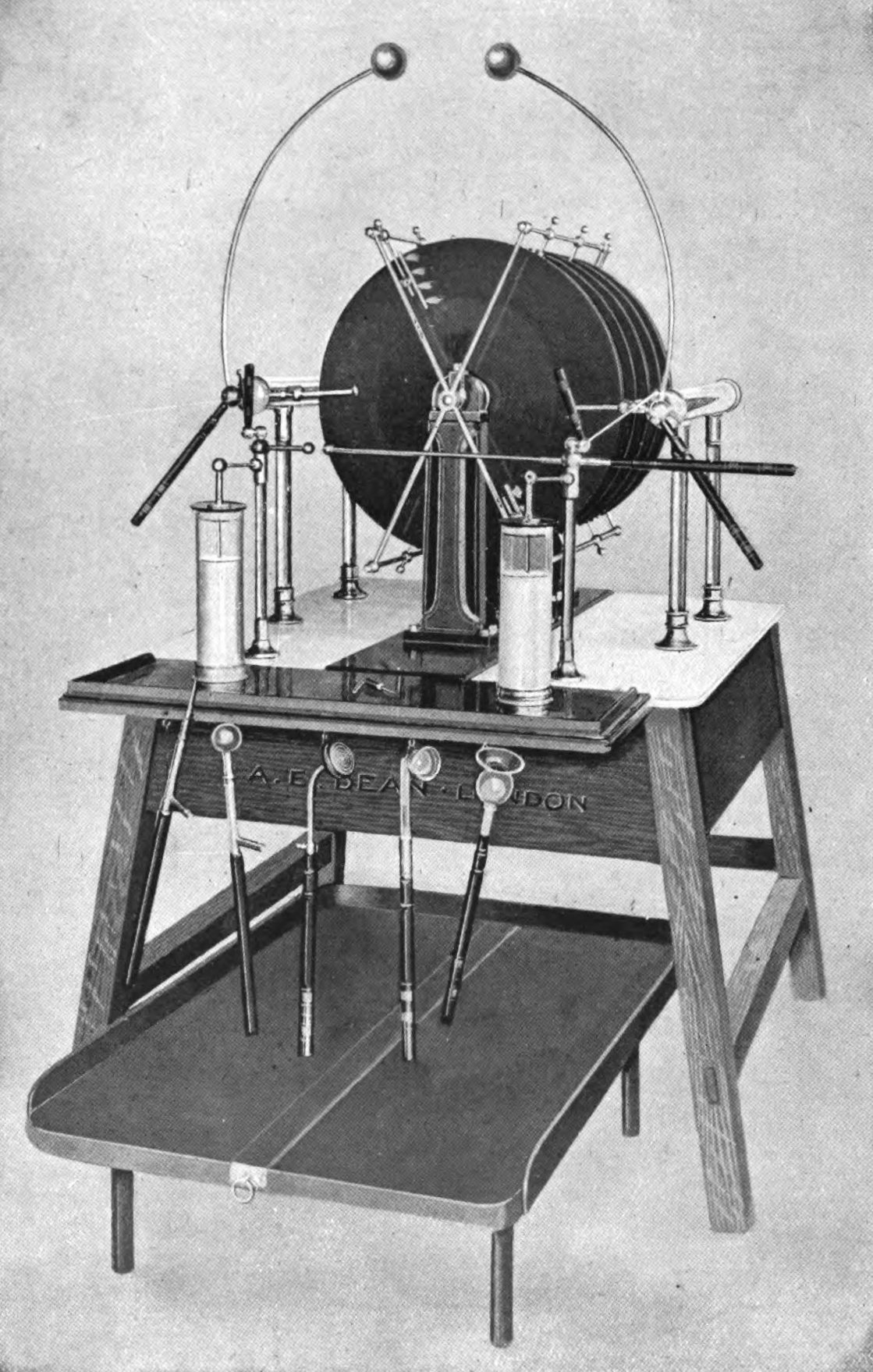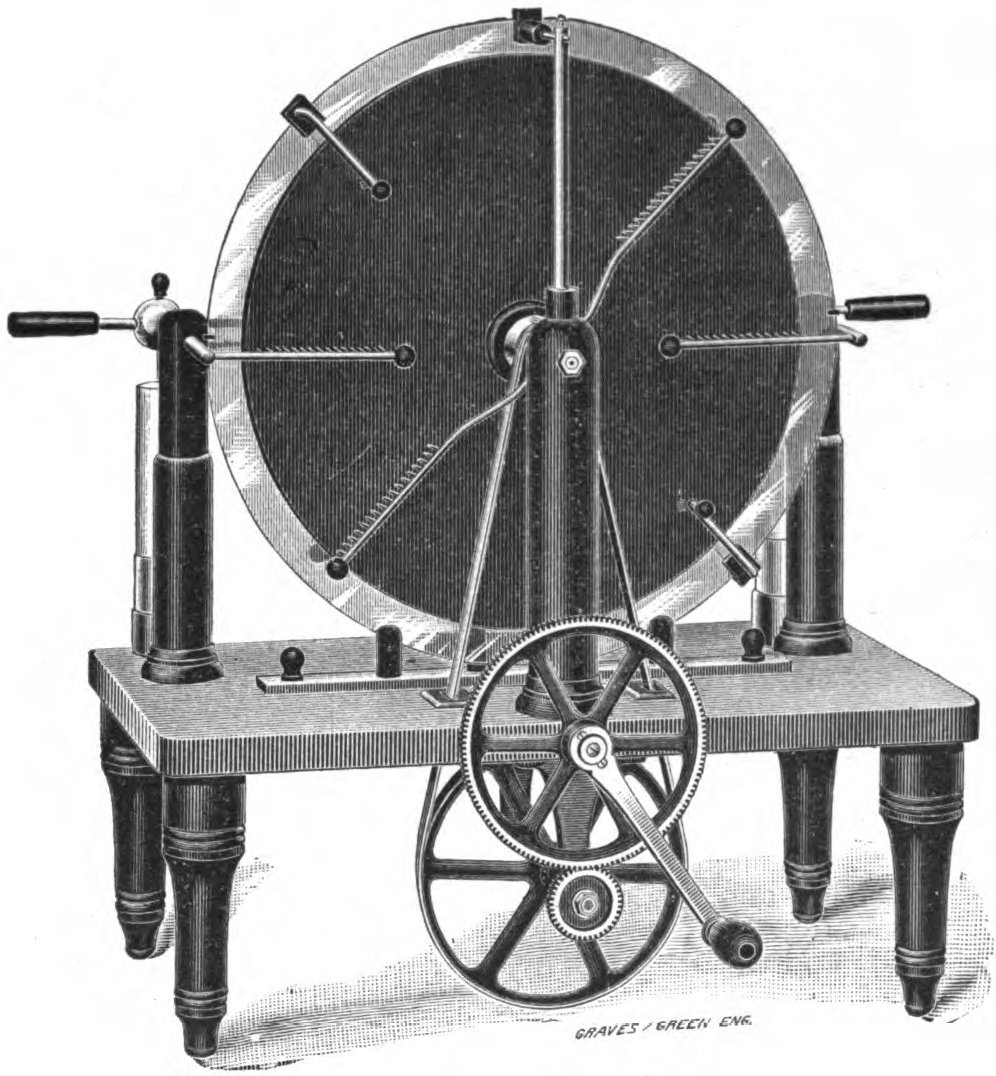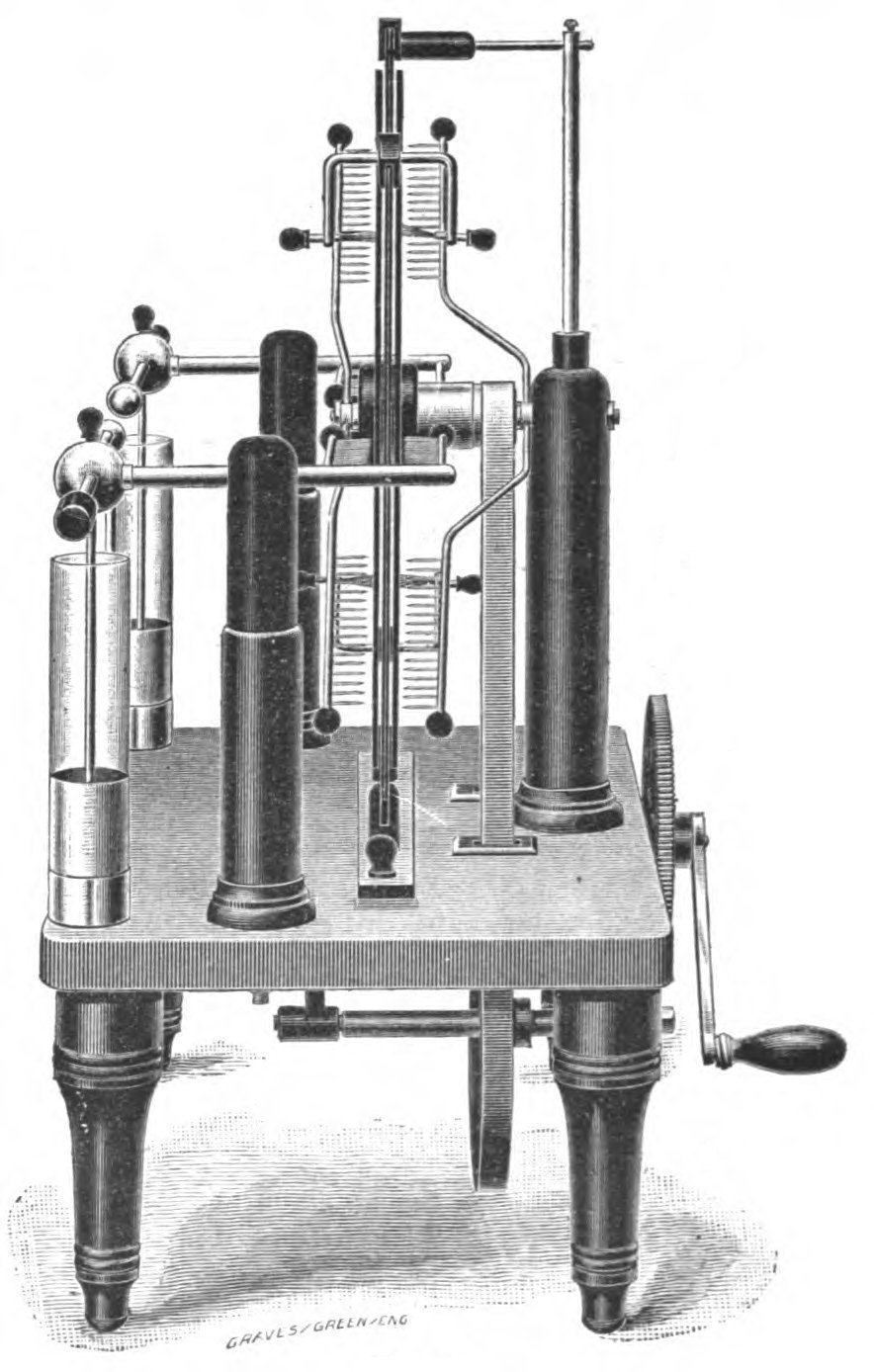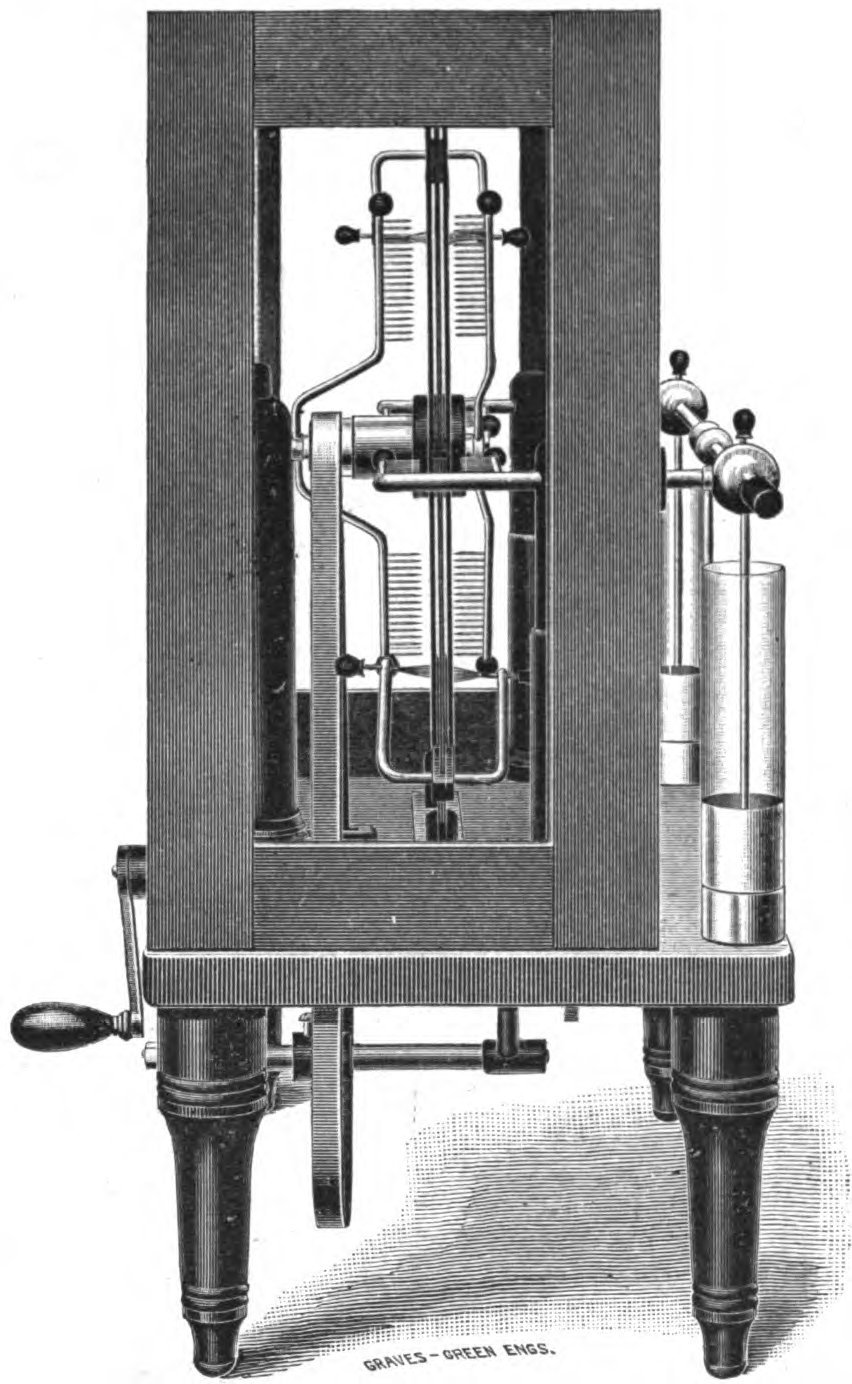Medical electrostatic machines
By the end of the XIX century and beginning of the XX century, and
specially in the first years after the discovery of X-rays, in 1896,
large electrostatic machines were built for medical purposes,
as electrotherapy treatments and to power X-ray tubes for
radiography. Here I collect
some pictures of these elaborate machines, with references to the
sources when available.
Probably the most powerful machine, the 100-plates machine built by R.
V. Wagner & Co. could produce more than 10 mA of current. It was
apparently a Toepler-Holtz machine,
with 50 fixed glass plates with 31"
of diameter and 50 rotating mica plates with 28" of diameter, arranged
in 25 back-to-back sections in an unusual vertical configuration [1].
Another machine made by the same maker, also of Toepler-Holtz type,
with a more conventional structure [2], with 16 plates, being 8 31"
fixed
glass plates and 8 28" rotating mica plates. The machine is
assembled so the fixed plates are mounted one against the other, with
two rotating disks, one at each side, so just 4 sections are visible in
the drawing. The extra 4 sections seen behind are reflections in
a mirror. The "crown" is for electrotherapy treatments. At the
front can be seen two Leyden jars connected to the terminals, and two
posts where a X-ray tube can be connected. The balls at the tops of the
posts could be extended to form spark gaps with the terminals, as X-ray
tubes were usually connected in series with spark gaps, that were used
to
adjust the intensity of the rays. [2] has also other drawings with
excellent quality of several similar machines. A similar machine can be
seen in links here.
A large Toepler-Holtz machine was used by Dr. F. H. Williams in the
Boston City Hospital [3], for X-Ray work. It had 8 fixed disks with 193
cm of diameter and 8 rotating disks with 183 cm of diameter, all
made of glass. An even larger machine, with 16 disks, was used by
Dr. William Rollins, the pioneer in X-Ray safety, at the same place.
[3] shows details of the machine's structure.
The Morton-Wimshurst-Holtz machine [4] is easy to find in advertisings of
the era. It was a multiple Holtz machine with a small Wimshurst machine
as starter. The photograph shows the machine connected to an X-Ray tube
through spark gaps mounted on the handles of the terminal rods, without
Leyden jars. Holtz machines were preferred due to their high output
current and high voltage, but required a starting machine, as they were
not self-starting as Toepler-Holtz and Wimshurst machines. A similar machine can be seen here.
A large Holtz machine with an unusual Toepler-Holtz machine at the top
for startup. Made by Waite & Bartlett Manufacturing Co.
Another Holz machine, with a small Wimshurst or Toepler-Holtz machine,
at the right side, for startup, and electrotherapy accessories [5]. Made by Waite & Bartlett Manufacturing Co.
A 16-plates Toepler-Holtz machine, with a very fancy cabinet, built by McIntosh Battery and Optical Company, Chicago.
This
machine was a Toepler-Holtz variant using rotating disks made of a
series of paper disks inpregnated with shellac and other resins, and
compressed with heat. The disks were then light and unbreakable,
and
could be rotated at very high speed (2000 rmp) [5]. The devices with
levers above the terminals are (probably) adjustable spark gaps to be
used with X-Ray tubes.
In Europe, Wimshurst and Bonetti machines were preferred. The picture
shows an 8-disks Bonetti machine with an unusual spherical terminal [6].
The "Ergos" machine [10], built by A. E. Dean, was a multiple Bonetti
machine with chains driving the disks inside the upright supports, and
disks that could be easily removed without need of disassembly. This picture shows the machine without the disks. See the
patents page.
Soon after the discovery of the X-rays, machines like this high-speed
Toepler-Holtz (without startup buttons, apparently) were developed [7].
A very large Holtz machine, built by Waite & Bartlett Manufacturing
Co, New York [8], that appeared in several publications of that time.
It had 8 plates with 60" of diameter, in Wimshurst-Holtz configuration,
with a Toepler-Holtz machine for startup. It could rotate at 250 rpm
and produce 30" sparks.
A large Toepler-Holtz machine built by N. O. Nelson & Co., Chicago.
It had 12 40" rotating plates and 12 44" stationary plates made of
0.136" glass, and could produce 20" sparks [9].
Some time ago, I restored one of these large machines.
More of these machines and accessories can be seen here.
References:
[1] M. K. Kassabian, "Röentgen rays and electrotherapeutics," J. B. Lippincott, 1910.
[2] R. V. Wagner & Co., "Catalog of electrical instruments for physicians
and surgeons," 1900.
[3] F. H. Williams, "The Roentgen rays in medicine and surgery," The Macmillan Company, New York, 1901.
[4] W. C. Borden, "The use of the Röntgen ray by the Medical
Department of the United States Army in the war with Spain," Government
Printing Office, Washington, 1900.
[5] S. Toussey, "Medical electricity, Röntgen rays and radium," W. B. Saunders, 1921.
[6] A. Roussel, "La franklinizacion réhabilitée," O. Doin, Paris, 1904.
[7] "The Roentgen rays, their production and use," American Roentgen Ray Company, 1897.
[8] "The Electrical Age", Vol. XX, no. 11, p. 179, September 1897.
[9] " The journal of advanced therapeutics," Vol. XXI, No. 11, p. 596, September 1903.
[10] T. D. Luke, "A manual of natural therapy," William Wood & Co., New York, p. 213, 1908.
Created: 31 August 2012
Last update: 15 September 2012
Created and maintained by Antonio Carlos M.
de Queiroz
Return to Electrostatic Machines
